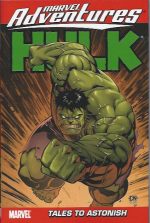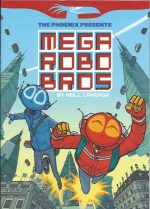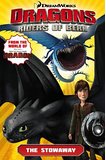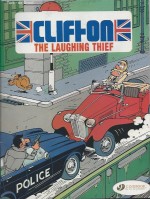
By Simon Furman, Jack Lawrence, Sara Richard & various (Titan Comics)
ISBN: 978-1-78276-080-1
DreamWorks Dragons: Riders of Berk and its follow-up Defenders of Berk are part of one of the most popular cartoon franchises around. Loosely adapted from Cressida Cowell’s engagingly energetic children’s books, the show is based upon and set between the How to Train Your Dragon movies. Of course if you have children you are almost certainly already aware of that already.
Wowing young and old alike across the globe, the series also spawned a series of comic albums. This fifth digest-sized collection features another epic encounter scripted by the ever-enthralling Simon Furman and ably illuminated Jack Lawrence, plus a delicious solo vignette.
In case you’re not absolutely au fait with the exhilarating world of the wondrous winged reptiles: brilliant but introverted boy-hero Hiccup saved his island people from being overrun by hostile dragons by understanding them. Now he and his unruly teenaged compatriots of the Dragon Rider Academy gleefully roam the skies with their devoted scaly friends, getting into trouble and generally saving the day.
When not squabbling with each other, the trusty teens strive to keep the peace between the vast variety of wondrous Wyrms and isolated Berk island’s bellicose Viking settlers.
These days, the dragons have all been generally domesticated, and the Riders’ daily duties generally involve finding, taming and cataloguing new species whilst protecting the settlement from attacks by far nastier folk such as Alvin the Treacherous and his piratical Outcasts and – all too often – fresh horrors and menaces…
As usual, before the comic confrontations commence there’s a brace of information pages reintroducing Hiccup and his devoted Night Fury Toothless, as well as tomboyish Astrid on Deadly Nadder Stormfly, obnoxious jock Snotlout astride his Monstrous Nightmare Hookfang, portly dragon-scholar Fishlegs on ponderous Gronckle Meatlug and the dim, jovially violent twins Tuffnut & Ruffnut on two-headed Zippleback Barf &Belch. Also afforded quick name-checks are Hiccup’s dad Chief Stoick, chief armourer/advisor Gobber and insidious arch-enemy Alvin too…
Completed by the colouring wizardry of Digikore and lettering from Jim Campbell, ‘The Legend of Ragnarok’ opens with our young champions romping in the sky as, far below, village pest and incurable dragon-hater Mildew rants on about the End of Days and unavoidable coming of the all-consuming Midgard Serpent.
Gobber and Stoick don’t give much credence to his babblings about Ragnarok, but they are concerned by the recent sea-quake, and subsequent whirlpools and tidal surges. In response the Chief reluctantly orders the recall of the fishing ships and sea patrols…
Hiccup, meanwhile, has troubles of his own. He’s never yet met a dragon he couldn’t befriend but the unruly Changewing he’s currently trying to train at the academy might ruin his spotless record. Not only is she incredibly hostile, but whenever he looks into her eyes the beast hypnotises him. He’s pretty fed up with regaining consciousness in the rafters of the great hall or on the edge of cliffs…
Turbulent seas continue to batter the island and as the Berk boats come in obsessed marauder Alvin takes his chances and launches a full invasion. The bizarre conditions have also unsettled the dragons, so Hiccup and Astrid are braving the skies on watch when they spot a stampede of terrified wild saurians from other islands. As they close in, however, the roiling seas are breached by the biggest monster they have ever seen.
Can the island-sized beast possibly be the Midgard Serpent, herald of the world’s ending?
Alvin doesn’t care. It wrecked his ships and his plans so he’s considering temporarily allying with Stoick to destroy it…
As it rears above Berk, ready to smash the island to shards, learned Fishlegs identifies it as a Leviathan-class Seashocker – commonly known as a Purple Death – before rallying with the villagers, Alvin’s Outcasts and the Dragon Riders for their last battle.
Hiccup meanwhile has hatched a desperate plan involving the cantankerously mesmerising Changewing which might save them all… as long as his newest conquest plays along…
Counterbalancing the apocalyptic action is a short tale starring Astrid by Furman & Sara Richard. ‘Queen of the Hill’ finds the feisty female warrior and faithful Stormfly washed up on a mystery island and menaced by a horde of Smothering Smokebreaths. With her dragon wounded and her axe lost, Astrid has to devise a cunning way to keep the predators at bay until help comes or her companion heals…
Although ostensibly crafted for excitable juniors and TV kids, this is another sterling example of supremely smart and funny adventure-sagas no self-indulging fun-fan or action aficionado of any age or vintage should miss: compelling, enticing, and splendidly satisfying.
© 2015 DreamWorks Animation L.L.C.










